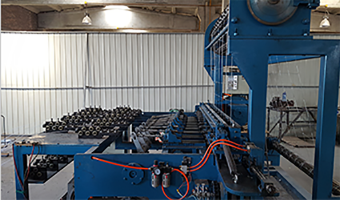The Allure of Tinted Glass Exploring Colour in Design
Tinted glass has emerged as a versatile and stylish element in architectural and interior design, allowing for creative expression while serving functional purposes. The concept of incorporating colour into glass materials transcends mere aesthetics; it embodies a fusion of art, science, and innovation. This article explores the myriad ways tinted glass can enhance the beauty and functionality of spaces, all while showcasing its rich palette of colours.
Understanding Tinted Glass
Tinted glass is produced by adding metal oxides during the manufacturing process, resulting in various shades and hues. This glass serves multiple purposes, including privacy, energy efficiency, glare reduction, and ultraviolet (UV) ray screening. The colours of tinted glass can range from subtle shades like light bronze or grey to deep hues such as blue, green, or even black. Each tint has distinct properties that can influence the atmosphere of a space.
The Impact of Colour on Space
Colour psychology plays a significant role in how we perceive our environment. Tinted glass can help manipulate emotions and sensations that occupants feel within a space. For instance, blue-tinted glass is often associated with calmness and tranquility, making it ideal for spaces like spas or healthcare facilities. In contrast, fiery red or orange tints can evoke feelings of warmth and energy, suitable for communal areas like cafes or gyms.
Moreover, the choice of colour can also affect the perceived size and brightness of a room. Lighter tints can make a space feel more airy and open, while darker hues create a cocooning effect. Designers use these properties strategically to optimize a space's layout and purpose, offering tailored experiences for inhabitants.
Architectural Applications
In architecture, tinted glass serves as both a functional and aesthetic component. Its application stretches from residential homes to commercial buildings. For instance, skyscrapers often incorporate darkly tinted glass to control heat gain and glare, while also contributing to a sleek, modern look. The reflective qualities of such glass can also create intriguing visual effects, allowing buildings to interact with their surroundings dynamically.
tinted glass colour
An excellent example is the use of tinted glass in museums and galleries, where careful attention must be paid to natural light control. By utilizing tinted glass, designers can exhibit artworks in a way that minimizes damage from UV rays, ensuring that colours remain vibrant over time.
Interior Design Utilization
In interior settings, tinted glass is commonly used in partitions, windows, and decorative elements. Privacy concerns in office environments can be elegantly addressed through the use of frosted or tinted glass partitions that maintain an open feel while delineating work areas. Homeowners often opt for tinted glass in shower enclosures or bathroom windows, achieving privacy without sacrificing natural light.
Moreover, tinted glass can be combined with other materials such as wood, metal, or textiles, creating striking contrasts and harmonies. The interplay of colour and texture can invigorate spaces, making them feel unique and personalized.
Sustainability Considerations
As the world gravitates towards more sustainable design practices, tinted glass has gained prominence for its energy-efficient properties. By reducing the amount of heat entering a building, tinted glass can lower the need for artificial cooling systems, leading to decreased energy consumption. This quality not only benefits the environment but also reduces utility costs for occupants.
Conclusion
The integration of tinted glass into architectural and interior design signifies more than just a trend; it represents a thoughtful approach to creating functional, beautiful spaces. The colour of tinted glass can influence mood, enhance aesthetics, and improve energy efficiency, embodying the intersection of artistry and practicality. As designers continue to explore innovative applications, tinted glass will undoubtedly remain an enduring element in the evolution of modern design. Whether used in grand structures or intimate interiors, tinted glass will continue to captivate with its transformative potential, painting our world in a spectrum of colours.
 Afrikaans
Afrikaans  Albanian
Albanian  Amharic
Amharic  Arabic
Arabic  Armenian
Armenian  Azerbaijani
Azerbaijani  Basque
Basque  Belarusian
Belarusian  Bengali
Bengali  Bosnian
Bosnian  Bulgarian
Bulgarian  Catalan
Catalan  Cebuano
Cebuano  Corsican
Corsican  Croatian
Croatian  Czech
Czech  Danish
Danish  Dutch
Dutch  English
English  Esperanto
Esperanto  Estonian
Estonian  Finnish
Finnish  French
French  Frisian
Frisian  Galician
Galician  Georgian
Georgian  German
German  Greek
Greek  Gujarati
Gujarati  Haitian Creole
Haitian Creole  hausa
hausa  hawaiian
hawaiian  Hebrew
Hebrew  Hindi
Hindi  Miao
Miao  Hungarian
Hungarian  Icelandic
Icelandic  igbo
igbo  Indonesian
Indonesian  irish
irish  Italian
Italian  Japanese
Japanese  Javanese
Javanese  Kannada
Kannada  kazakh
kazakh  Khmer
Khmer  Rwandese
Rwandese  Korean
Korean  Kurdish
Kurdish  Kyrgyz
Kyrgyz  Lao
Lao  Latin
Latin  Latvian
Latvian  Lithuanian
Lithuanian  Luxembourgish
Luxembourgish  Macedonian
Macedonian  Malgashi
Malgashi  Malay
Malay  Malayalam
Malayalam  Maltese
Maltese  Maori
Maori  Marathi
Marathi  Mongolian
Mongolian  Myanmar
Myanmar  Nepali
Nepali  Norwegian
Norwegian  Norwegian
Norwegian  Occitan
Occitan  Pashto
Pashto  Persian
Persian  Polish
Polish  Portuguese
Portuguese  Punjabi
Punjabi  Romanian
Romanian  Russian
Russian  Samoan
Samoan  Scottish Gaelic
Scottish Gaelic  Serbian
Serbian  Sesotho
Sesotho  Shona
Shona  Sindhi
Sindhi  Sinhala
Sinhala  Slovak
Slovak  Slovenian
Slovenian  Somali
Somali  Spanish
Spanish  Sundanese
Sundanese  Swahili
Swahili  Swedish
Swedish  Tagalog
Tagalog  Tajik
Tajik  Tamil
Tamil  Tatar
Tatar  Telugu
Telugu  Thai
Thai  Turkish
Turkish  Turkmen
Turkmen  Ukrainian
Ukrainian  Urdu
Urdu  Uighur
Uighur  Uzbek
Uzbek  Vietnamese
Vietnamese  Welsh
Welsh  Bantu
Bantu  Yiddish
Yiddish  Yoruba
Yoruba  Zulu
Zulu 

